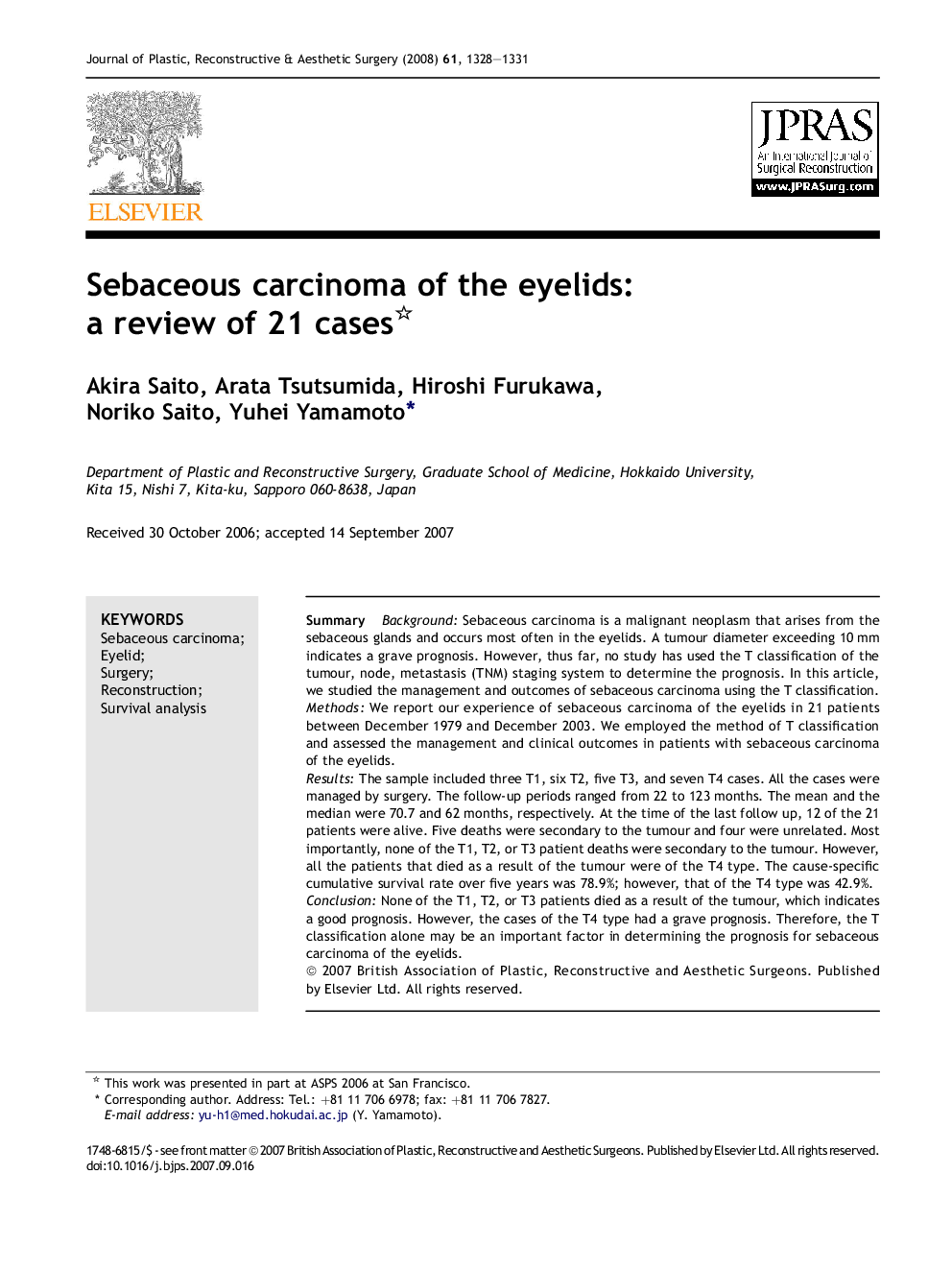| Article ID | Journal | Published Year | Pages | File Type |
|---|---|---|---|---|
| 4120536 | Journal of Plastic, Reconstructive & Aesthetic Surgery | 2008 | 4 Pages |
SummaryBackgroundSebaceous carcinoma is a malignant neoplasm that arises from the sebaceous glands and occurs most often in the eyelids. A tumour diameter exceeding 10 mm indicates a grave prognosis. However, thus far, no study has used the T classification of the tumour, node, metastasis (TNM) staging system to determine the prognosis. In this article, we studied the management and outcomes of sebaceous carcinoma using the T classification.MethodsWe report our experience of sebaceous carcinoma of the eyelids in 21 patients between December 1979 and December 2003. We employed the method of T classification and assessed the management and clinical outcomes in patients with sebaceous carcinoma of the eyelids.ResultsThe sample included three T1, six T2, five T3, and seven T4 cases. All the cases were managed by surgery. The follow-up periods ranged from 22 to 123 months. The mean and the median were 70.7 and 62 months, respectively. At the time of the last follow up, 12 of the 21 patients were alive. Five deaths were secondary to the tumour and four were unrelated. Most importantly, none of the T1, T2, or T3 patient deaths were secondary to the tumour. However, all the patients that died as a result of the tumour were of the T4 type. The cause-specific cumulative survival rate over five years was 78.9%; however, that of the T4 type was 42.9%.ConclusionNone of the T1, T2, or T3 patients died as a result of the tumour, which indicates a good prognosis. However, the cases of the T4 type had a grave prognosis. Therefore, the T classification alone may be an important factor in determining the prognosis for sebaceous carcinoma of the eyelids.
